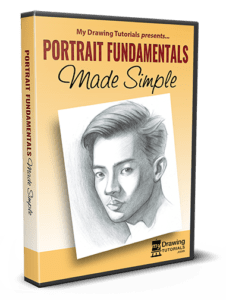
If you wanna learn more about portrait drawing, check out my “Portrait Fundamentals Made Simple” course.
It’s a very beginner-friendly course that walks you through all the basics of portraiture, from constructing a basic head, facial proportions, drawing the features, and finally drawing a realistic portrait step-by-step.
Lesson Transcript
When it comes to free-hand drawing the head, there are many methods uses by many artists. One of the most popular (and in my opinion, the most effective) method out there is the Loomis method.
This method was developed by artist, Andrew Loomis, many years ago as a way to construct the head and draw it from any angles. Unlike the grid method, which is limited to photo references, once you master the Loomis method, you’ll be able to draw the head at any angles, from photo, life, and even your imagination.
Here’s how it works…
The head can be simplified into 2 geometric shapes: a sphere for the cranium and a boxy wedge shape for the jaw.
Let’s examine the sphere shape. This shape is formed by taking a perfectly round sphere and cutting off the sides. This puts it closer to the shape of a real head.
And you can examine this for yourself: the top of you head isn’t perfectly spherical. Rather it’s mostly round with the sides being somewhat flat.
From the front, the shape will look like this, with the sides being straight lines. As the head starts to turn, we are able to see more of the side and it looks like an ellipse. As the head continue to turn, the ellipse gradually gets bigger. And when the head is all the way in profile view, the ellipse will be a perfect circle.
Now let’s see how we can use this information to draw a head from the front view.
We’ll start with a circle. We’ll trim off the sides in a bit, but first let’s put in the center line.
The center line is an imaginary line the runs down the center of the face. From the front view, the center line will be right in the middle of the face and just a straight line.
However, as the head turns, the center line will shift off the center and towards the direction that the face is looking.
Also, the un-even terrain of the face will also cause the center line to change from a straight line to a more complex wavy line.
Even though the center line won’t actually show up in a finished portrait, it’s a very helpful tool for visualizing the head as a three-dimensional object.
Next let’s locate the browline. The position of the browline will depend on the tilt of the head.
When the head is look straight ahead, the browline will be leveled with the top of the ears. When the head is tilted up, the browline will be higher then the ears. And when the head is tilted down, the browline will be lower than the ears.
In this case, the head will be looking straight head so the browline will be right in the middle of the circle and leveled with the ears.
Next, let’s locate the hairline. The hairline will be about 2/3 of the way up from the browline. So if we just divide the top portion of the circle into thirds, the hairline will be right here.
Now let’s find the nose. The bottom of the nose will also be about 2/3 of the way down from the browline. So, we can just take the measurement we got for the hairline, bring it down, and mark the bottom of the nose.
Lastly, the chin will also be the same distant down from the nose, once again, we’ll take that same measurement, bring it down from the nose, and mark the bottom of the chin.
Notice how the face is divided into 3 equal parts: from the hairline to the browline, from the browline to the bottom of the nose, and from the bottom of the nose to the bottom of the chin.
This is known as the “Rule of Thirds” and is very effective tool for measuring the proportions of the face. Of course, not every face will conform perfectly to this rule. Some people will have bigger foreheads or shorter chins, but this is a great starting point.
OK, so now let’s trim off the sides of the circle to bring it closer to the shape of a real head.
There’s not really an exact rule for how much to take off here. I like to take off just enough to give the circle and slight oval shape. As you draw more and more heads, you’ll develop a sense for how much to trim off.
And once finished, do a quick check to make sure both sides are symmetrical… and erase the extra lines.
OK, now for another detail…
Here’s top-down view of a head. Notice how the head is slightly thinner in the front than it is in the back. Because of this when looking at the head from the front view we’ll be able to see a bit of the sides.
We can represent this by drawing two thin ellipses on the sides. Unlike normal ellipses, these ones are going to be a bit more pointy at the ends.
Also, notice that the ellipses correspond with the hairline and the bottom of the nose.
To give the sides of the head some dimension, let’s draw in these vertical and horizontal lines. These lines also serves to indicate the tilt of the head. The vertical lines shows that the head is pointing straight up and the horizontal line shows that the head is looking straight ahead.
Now let’s draw in the lower portion of the face. First we’ll roughly estimate the width of the chin. Next, we’ll attach the jaw. The sides of the jaw usually taper in a bit as it moves down. Then connect the lines.
Sometimes I find that it can get a little bit crowded down here. In which case, I’ll deviate from the Rule of Thirds and move the chin line down a tiny bit. But in this case, everything looks fine.
Before going further, let’s erase this guideline here.
There are two rhythm lines that connects the side of the face to the corners of the chin. These lines represents the separation between the front plane of the face and the side planes. And you can probably see this plane change on your own face.
Now, let’s add the neck for some support and our simplified head is complete.
I’ll just go over it one more time and darken and clean up some of the lines.
From here, we can add in the features. I’ll cover exactly how to do this in the future lessons.
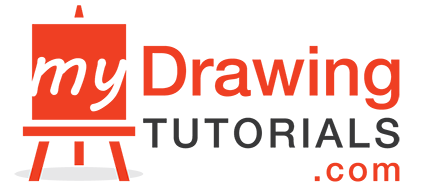

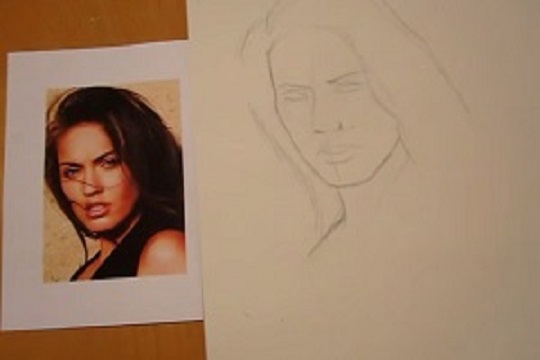
![Drawing Realistic Portrait Series [1 of 8] – Intro & Materials](https://mydrawingtutorials.com/wp-content/uploads/2012/08/Portrait-Lesson-1.jpg)
![Drawing Realistic Portrait Series [2 of 8] – The Fundamentals of Shading](https://mydrawingtutorials.com/wp-content/uploads/2012/08/Portrait-Lesson-2.jpg)

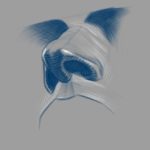
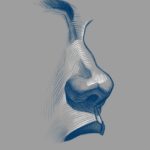
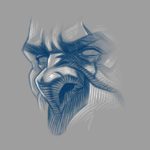
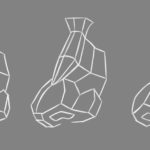
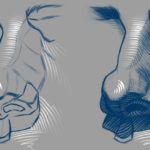
Hi Ethan,
Your 3/4 portrait male drawing resulted from my search: so cool; a far better method than paler ones! I want to garner praise from you for me pre-tutorial work; but there’s no attachment option here.
Just imagine it’s greatness.
your tutorials are always excellent. Do you have a course on perspective???
Thank you very much, Joyce! Yes, I do actually, you can find it here: https://mydrawingtutorials.com/perspective
Joyce, Ethan course on Perspective is of the Best out there. Beautifully explained with clear demonstrations.
Wow, thank you so much. That is very kind!